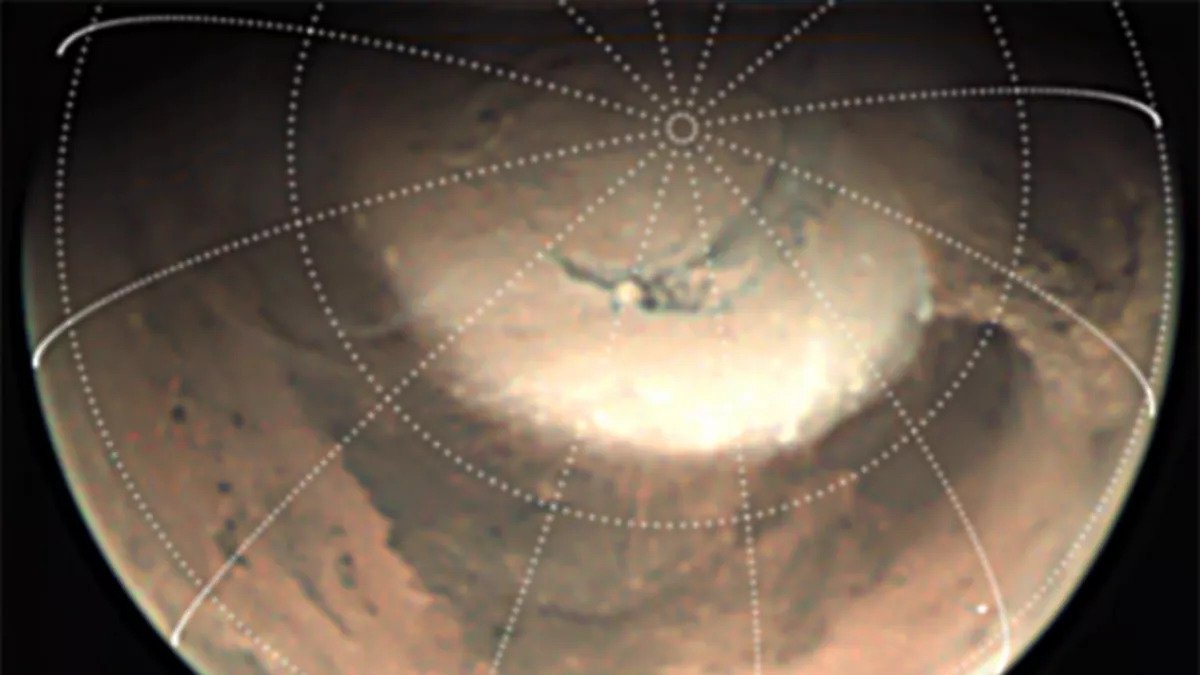A study of Martian dust storms has shown that their clouds are surprisingly similar to those on Earth. The processes taking place in the furious storms of the red planet are very similar to what we see in terrestrial typhoons.

Dust storms from orbit
Scientists exploring Mars using the Mars Express and Mars Reconnaissance Orbiter (MRO) spacecraft operating in its orbit have made an unusual discovery regarding its atmosphere. They observed two dust storms that occurred at the north pole of the planet in the spring of 2019.
For the study, data from the VMC visual monitoring camera, the HRSC high-resolution stereo camera and the MRO color camera were used. They conveyed a picture of an unpredictable dust storm, which measured from 1 to 2 thousand km. The wind speed in it reaches 140 km/h, and clouds rise to a height of 6 to 11 km.
Atmospheric phenomena are closely related to the surface of the planet. And Mars, unlike Earth, is mostly covered not with water or vegetation, but with fine dust. However, the spiral shapes that take on storms there are extremely similar to what we see on Earth.
How are Martian storms similar to terrestrial ones?
At the same time, the similarity of Martian storms with terrestrial storms is not only external. Researchers have seen them in great detail. They saw that each of these natural phenomena consists of separate cells, inside which air masses circulate.
Heat air from the surface rises along the center of the cell, reaches a certain height, cools and gradually “flows down” to its edges, where it sinks down to warm up again. Partly, there is also an influx of cold air from the outside between the cell boundaries.
The same thing happens on Earth, but this process is closely connected with the ocean, over which most hurricanes occur. Warm air rises up along with water vapor. At altitude, the latter cools and condenses into clouds, which creates a kind of granular structure marking the centers of atmospheric cells.
Surprisingly, on Mars, where there is almost no water, the same thing is observed. Only instead of water vapor, clouds form dust slices here. Cold air carries them much worse than warm air, so they mostly remain in the center of the atmospheric cell, forming a “grainy” picture familiar to climatologists.
The importance of this discovery lies in the fact that until now Martian storms were considered unpredictable due to the dissimilarity of the red planet to ours. The published study shows that, despite this, the mechanism of formation of these phenomena is very similar to the Earth.
This will allow us to more confidently apply the atmospheric models familiar to us on the red planet and provide for the behavior of dust storms, which in the future may well affect the course of manned Martian missions.
According to www.space.com
Follow us on Twitter to get the most interesting space news in time
https://twitter.com/ust_magazine

